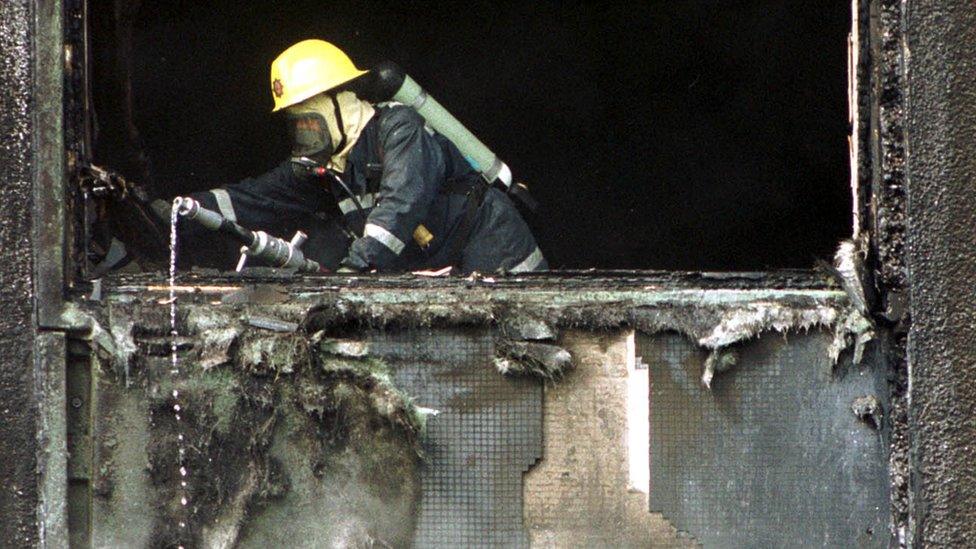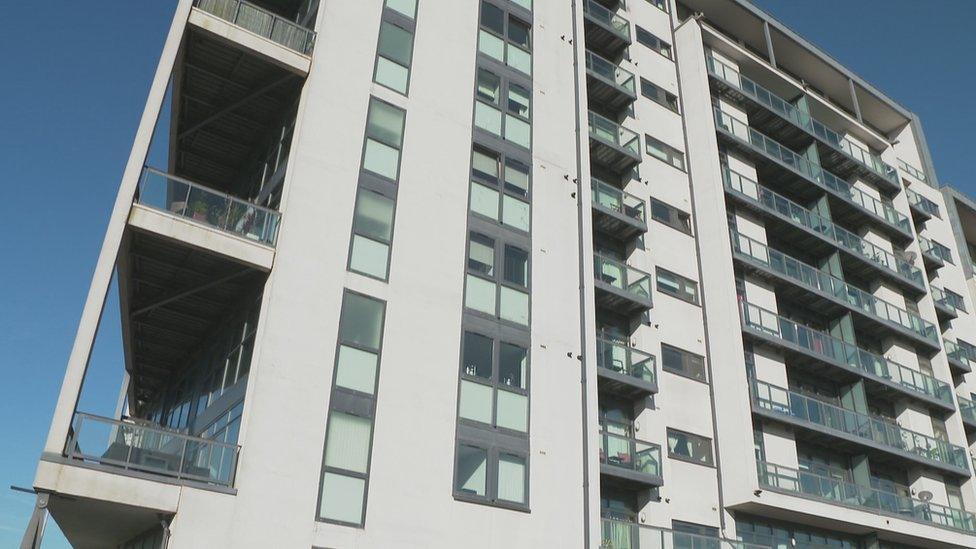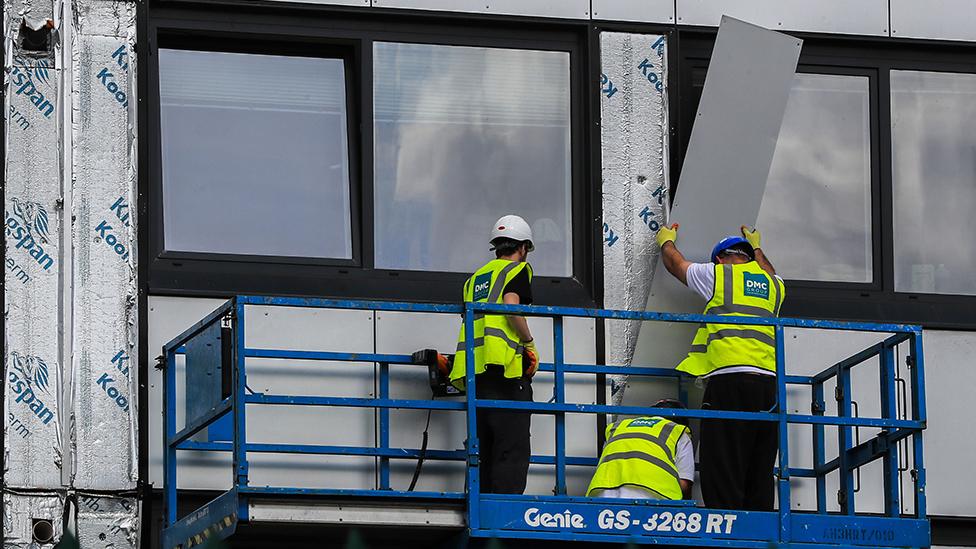How are the laws on cladding changing in Scotland?
- Published

Legislation is set to tighten the rules on the use of combustible cladding on new high-rise buildings in Scotland.
Certain materials will be banned on any new buildings where the floors are more than 11m above the ground.
The Scottish government says they are the third set of changes to fire safety standards since the Grenfell Tower tragedy.
What is the new legislation?
A temporary ban on using combustible materials on the outside of certain buildings has been in place in Scotland since late 2018.
It was introduced in the wake of the Grenfell disaster in 2017, when fire raced up the exterior of a tower block building and then spread to all four sides of the property. Seventy-two people died.
The legislation which was laid before the Scottish Parliament on Friday will formalise that ban, which reduced the height at which combustible cladding could be used from 18m to 11m.

Legislation changed in Scotland after the 1999 fire in Irvine
The rules in Scotland were already stricter than the rest of the UK, due to legislation that had been introduced in 2005. This followed a fatal fire at the Garnock Court tower block in Irvine in 1999.
Since 2005, new cladding systems on high rise blocks of flats have either had to use non-combustible materials or pass a large-scale fire test.
This test, known as a BS 8414, mimics a fire coming out of a window on to a cladding system. If the cladding was effective, despite its combustibility rating, it could be used.
The new legislation removes the option of a fire test. That means panels which are not seen as non-combustible will be totally banned on buildings above 11m, and on all higher risk buildings such as hospitals and care homes.
The highest risk cladding, which uses metal composite materials, will be banned from any new building of any height. Replacement cladding will also have to meet the new standards.
The legislation only applies to new buildings and replacement cladding, so will not be apply to existing buildings.
What happens to existing homeowners?

Housing is a devolved issue where the power lies with the Scottish Parliament.
When it became apparent that materials on the outside of homes which were developed before the law changed in 2005 may have been unsafe, this had implications for buying and selling, and for insurance.
Last year, the Scottish government said it intended to use £97m it was receiving from the UK government as Barnet consequentials to deal with Scotland's own cladding crisis.
This included a scheme to pilot a new single building assessment, where one inspection could be carried out to identify whether there were any issues with a block of flats.
Previously, all those who owned properties in a block of flats had to pay for these surveys individually.
Building Standards Minister Patrick Harvie told the BBC's Good Morning Scotland programme that 25 buildings were going through assessments, with the first ones due to be completed in the coming weeks and months.
Who would pay for repairs?

Cladding being removed from a tower block in Manchester
The Scottish government says it expects the majority of buildings will be shown to be safe, and that where issues are found then "we will seek the most appropriate solutions to remediation".
But who would pay? It could be the Scottish government, the developers or the homeowners.
Mr Harvie told the BBC that the issue of how to fund any necessary replacements was "a very, very difficult one".
Earlier this month it was announced that developers had struck a deal with the UK government to help fix unsafe cladding on tall buildings.
An extension to the building safety levy, which is charged on all new residential buildings in England, will collect £3bn, and developers will pay at least £2bn to fix any tall buildings which they had a role in developing.
Mr Harvie said there would not be any additional funding coming to the devolved administrations as a consequence of this agreement.
He said there was "a really serious problem of cooperation" between the UK government and the Scottish and Welsh governments, and that a UK-wide solution was needed.
The £97m previously allocated to Scotland had already been committed towards the single building assessments.
"That's the work that needs to be carried out to understand on a bespoke basis what needs to change with each of these buildings," he said.
Mr Harvie said developers and the construction industry should make the same offer in Scotland as had been agreed in England.
He added that the Scottish government needed to look at its powers and figure out how to "make sure that the developers step up in the same way in Scotland".
A UK government spokesperson said it had secured an industry-wide agreement and would continue to work closely with devolved administrations on the concerns raised.